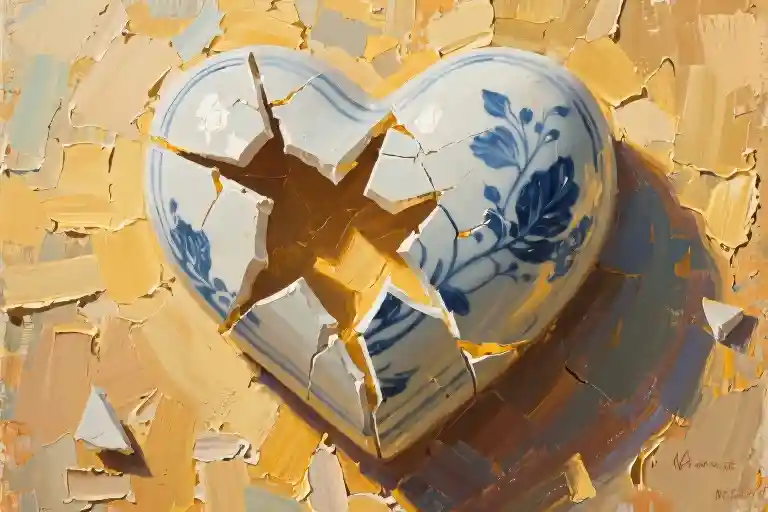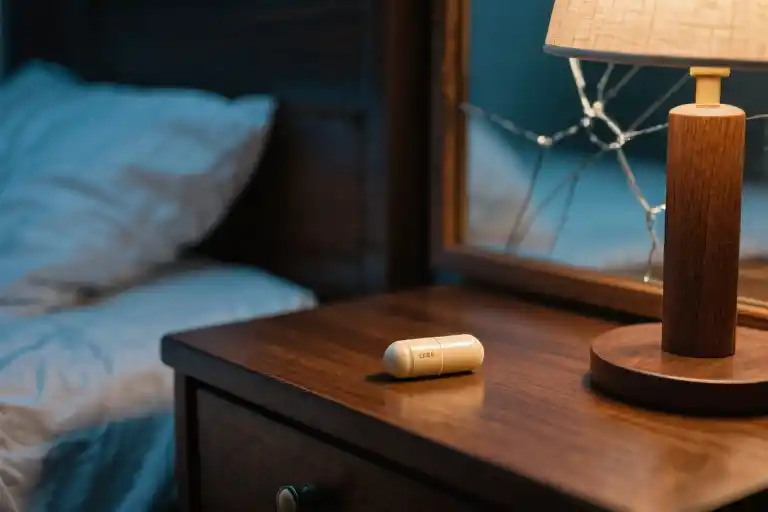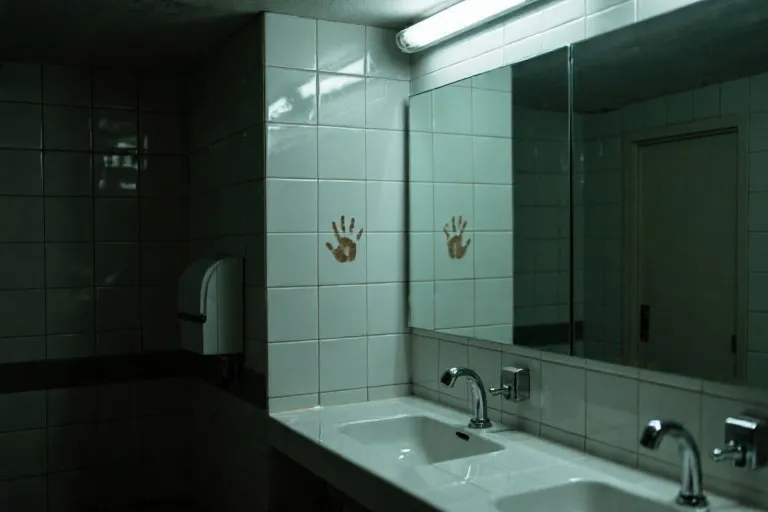The scars we carry from childhood aren’t always visible to the naked eye. They don’t always show up as physical marks that fade with time. Some wounds remain tender to the touch decades later, still capable of sending sharp jolts of pain through our adult lives when accidentally brushed against. This is the reality of childhood trauma – it doesn’t magically disappear when we turn eighteen or move out of our family home.
Society loves its neat narratives about family. The picture-perfect image of mother, father, and children gathered around the dinner table. The assumption that if the family structure appears intact, the relationships within must be healthy. But those of us who grew up in emotionally turbulent homes know the painful truth: A complete family doesn’t automatically mean a happy one. The most damaging storms often happen behind closed doors, in the spaces between what’s said aloud and what’s felt in silence.
For years, I kept my story locked away, believing time would soften the edges of my memories. But trauma doesn’t work that way. Unprocessed pain doesn’t fade – it fossilizes, becoming part of our emotional skeleton. Today, I’m breaking my silence because I know I’m not alone in this. There are others who grew up walking on emotional eggshells, who learned to associate ‘home’ with tension rather than comfort, who still carry the invisible weight of childhood wounds that never properly healed.
The irony is that from the outside, my family looked perfectly normal. Two parents, siblings, a house in the suburbs – all the checkboxes of stability were marked. But inside those walls, love wasn’t something we felt; it was something we performed for others. The real language of our home was spoken in raised voices, in objects thrown in anger, in the heavy silences that followed explosive fights. As a child, I didn’t pray for my parents to stay together – I prayed for the fighting to stop, even if that meant separation.
What makes childhood trauma particularly insidious is how it rewires our developing brains. The fear I felt as a eight-year-old hearing another midnight argument didn’t stay confined to that moment – it became part of my nervous system’s blueprint. Decades later, certain tones of voice or sudden loud noises can trigger that same visceral reaction, transporting me back to moments I thought I’d left behind. This is the cruel trick of emotional wounds from parents – they keep reopening at unexpected times.
Most people don’t understand why someone would choose to remain single rather than risk recreating their parents’ dysfunctional marriage. They offer well-meaning but dismissive platitudes: ‘You’ll change your mind when you meet the right person’ or ‘Not all relationships are like your parents’. What they fail to grasp is that for those of us with childhood trauma, the fear isn’t irrational – it’s learned. When your earliest model of love involved pain, your brain quite reasonably tries to protect you from repeating that experience.
I’m sharing this now because I want others who grew up in similar environments to know: Your feelings are valid. Your reluctance to recreate family patterns you know to be harmful isn’t a flaw – it’s a form of self-protection. And most importantly, healing from childhood trauma is possible, even if those wounds still feel fresh. The first step is acknowledging they exist – which is why I’m finally giving voice to mine.
The Dissection Room of Memory
The Kitchen War: Shattered Porcelain and Permanent Tinnitus
The kitchen smelled of burnt toast and unspoken apologies. I was seven when the ceramic bowl hit the tile floor, exploding into fragments that would later embed themselves in my auditory memory. What began as a disagreement over unpaid bills escalated into symphonic destruction – my mother’s soprano shrieks harmonizing with my father’s bass profanities, the percussion section provided by slamming cabinets.
Years later, certain frequencies still trigger that fight-or-flight response. The high-pitched chime of porcelain meeting granite in restaurants. The ultrasonic beep of a microwave timer. These sounds bypass rational thought, traveling neural pathways worn smooth by repetition, straight to the amygdala where childhood terror lies preserved in formaldehyde.
Midnight Corridor: Distorted Silhouettes Through the Door Crack
My childhood bedroom shared a wall with their battlefield. The hallway became my observation deck, where I’d press one eye against the doorjamb, watching shadow puppets of violence projected on the opposite wall. Their silhouettes elongated and merged like some grotesque carnival mirror – a twisted dance where hands became claws, heads ballooned into monstrous proportions.
Thirty years haven’t faded the afterimages. Certain body postures in adult relationships still activate my threat detection – a partner raising arms to stretch suddenly transformed into that ominous shadow play. The mind records trauma in 4D, preserving not just events but the angles of light, the quality of darkness, the exact way a silhouette can fracture your sense of safety.
Birthday Candles: Wishes Extinguished by Shouting
They forgot the ice cream but remembered to argue about whose family I took after. My ninth birthday cake bore nine trembling flames that mirrored the tremor in my hands as voices crescendoed around the dining table. “Blow out your candles!” someone commanded, though no one paused the argument to sing.
The wax pooled around numbered candles as I made the only wish available to a child in a warzone: for the noise to stop. When I finally exhaled, the smoke curled upward to join the toxic atmosphere. To this day, the sulfur strike of a match or the chemical sweetness of frosting can transport me back to that moment when I learned celebrations aren’t armor against familial pain.
The Body Remembers What the Mind Tries to Forget
These vignettes aren’t merely recollections – they’re living tissue. The tinnitus persists like an auditory scar. The startle reflex activates at certain silhouettes. Birthday parties still taste faintly of panic. Trauma encodes itself in our very biology, creating somatic flashcards that bypass conscious recall.
What we often dismiss as childhood memories are actually neural pathways that continue to shape our adult perceptions. The kitchen, the hallway, the birthday table – these became the original blueprints for how I learned to anticipate danger, interpret conflict, and measure love’s reliability. Not through grand gestures, but through a thousand micro-moments that collectively built my nervous system’s definition of ‘normal.’
The Child Inside Still Trembles
The Perfume Paradox
Certain scents trigger memories we can’t outrun. For me, it’s the sharp tang of cologne—any men’s fragrance with woody undertones. A whiff in an elevator or passing a stranger on the street, and suddenly I’m eight years old again, pressing my face into my father’s suit jacket before he left for work. The contradiction stings: that comforting memory now laced with the knowledge of how he’d return each evening, the same cologne mingling with whiskey and rage.
My body reacts before my mind catches up. Palms dampen. Throat constricts. That distinctive childhood trauma response—learned through years of conditioned fear—floods my system like an outdated survival manual. Therapists call it ‘olfactory triggering,’ where smells bypass rational thought to awaken emotional wounds from parents. Friends mistake it for allergies when I abruptly change seats or open windows. How do you explain that your immune system seems to reject an entire gender’s grooming products?
Wedding Bells or Alarm Bells?
Pinterest-perfect wedding videos populate my social feeds—all billowing veils and tearful vows. Most people feel wistfulness; I experience panic attacks because of family associations. The moment the officiant says “speak now or forever hold your peace,” my chest tightens. I hear my mother’s choked silence during their arguments, the way she swallowed words to ‘keep the peace.’
Marriage-related PTSD manifests in unexpected ways:
- Freezing when partners mention future plans
- Physical recoil at jewelry commercials
- Dreams where wedding cakes morph into battlefields
What should symbolize love instead triggers fear of marriage because of family history. It’s not cynicism but self-preservation—my nervous system remembers what happens when ‘forever’ promises shatter.
The Nursery Nightmare
A baby wails in the apartment below mine. The sound shouldn’t unnerve a thirty-year-old woman, yet here I am, pulse racing as infant cries trigger flashbacks to being nine and rocking my sobbing sister, both of us hiding in a closet during another fight. This is generational trauma’s cruel joke: your body reacts to children’s distress like it’s your own childhood repeating.
Cradle PTSD symptoms I’ve learned to recognize:
- Hypervigilance: Scanning playgrounds for distressed kids
- Avoidance: Crossing streets to bypass strollers
- Guilt: Resenting parents then hating myself for it
The cruelest twist? Wanting to comfort that crying baby while simultaneously needing to flee. The dysfunctional family effects leave you torn between nurturing instincts and survival mode.
Rewiring the Responses
Healing isn’t about erasing these reactions but understanding their roots:
| Trigger | Childhood Association | Current Coping Strategy |
|---|---|---|
| Men’s cologne | Father’s pre-argument routine | Carry citrus oil to sniff as counter-scent |
| Wedding vows | Parents’ broken promises | Practice grounding techniques during ceremonies |
| Baby cries | Comforting sister during fights | Keep noise-canceling headphones handy |
Trauma healing means accepting that the child inside still flinches, while the adult learns new protective measures. That perfume may always carry echoes, but now I recognize the scent memory for what it is—a warning system that served its purpose but needs updating.
They Say I’ll Change My Mind
“You just haven’t met the right person”
The words land like well-meaning stones dropped into the quiet pond of my resolve. I’ve heard this refrain more times than I can count – from aunts who pinch my cheeks at family gatherings, from coworkers who whisper behind cubicle walls, from dating app matches who take my boundaries as a challenge. Their certainty feels like a thousand paper cuts, each one whispering: Your trauma isn’t valid. Your fear isn’t final.
What they don’t understand is that my hesitation isn’t about finding some mythical “right person.” It’s about the visceral way my body reacts when romance gets too close. The way a man raising his voice at a baseball game makes my palms sweat. How an argument about dinner plans can send me mentally retreating to that childhood closet where I’d hide during parental storms. These aren’t preferences – they’re survival mechanisms etched into my nervous system through years of witnessing love turn toxic.
“Time heals all wounds”
If I had a dollar for every time someone offered this platitude… I’d have enough money to pay for a decade of therapy. The cruel irony? Time has only shown me how deeply childhood trauma embeds itself. Like invisible ink, the memories reveal themselves at unexpected moments:
- When I catch a whiff of Old Spice (my father’s cologne) in an elevator
- When I hear ceramic dishes clatter too loudly in a restaurant kitchen
- When a partner says “We need to talk” and my brain immediately prepares for emotional shrapnel
Neuroscience explains what well-wishers don’t – traumatic memories get stored differently. They bypass the normal filing system and take up residence in the amygdala, ready to trigger fight-or-flight at the slightest reminder. No amount of calendar pages turning can rewrite that biological reality.
“All parents are like that”
This might be the most insidious dismissal of all. It collapses the spectrum of parental behavior into one homogenous blob, making emotional neglect seem as normal as bedtime stories. But there’s a canyon between typical family squabbles and the chronic distress that rewires a child’s brain:
| What Society Calls Normal | What Trauma Actually Looks Like |
|---|---|
| Occasional arguments | Daily walking on eggshells |
| Strict rules | Unpredictable emotional eruptions |
| Working parents | Emotionally absent caregivers |
The minimization hurts because it asks me to distrust my own lived experience. It’s like telling someone with a broken leg they’re overreacting because “everyone gets bruises.” The damage isn’t in the incidents themselves, but in their relentless repetition without repair.
The Body Keeps the Score
Modern psychology finally has language for what trauma survivors always knew – our bodies become living archives. That tightness in my chest when conflict arises isn’t an overreaction; it’s my seven-year-old self’s fear fossilized into muscle memory. My aversion to marriage isn’t some phase – it’s my psyche’s brilliant adaptation to protect me from reliving history.
Perhaps the most radical act is honoring these responses rather than apologizing for them. When someone says “You’ll change your mind,” I’m learning to respond: “Maybe. But today, I’m listening to what my trauma needs.” There’s power in that pause – in choosing self-understanding over societal scripts.
Because healing isn’t about becoming someone who wants marriage. It’s about becoming someone who can tell the difference between fear speaking and truth speaking. And that distinction can’t be rushed by anyone’s timeline but my own.
Living With the Scars: My Experiments in Healing
EMDR Therapy: Can Eye Movements Rewrite Memories?
The first time I heard about EMDR (Eye Movement Desensitization and Reprocessing), it sounded like science fiction. The therapist explained how bilateral stimulation – following her finger with my eyes while recalling traumatic memories – could help my brain reprocess childhood trauma. Skeptical but desperate, I decided to try this unconventional approach to healing childhood wounds.
During sessions, fragmented memories surfaced with startling clarity: the pattern of cracks on our kitchen tiles where a plate had shattered, the particular pitch of my father’s voice when anger took over. As my eyes darted side to side, something remarkable happened – the memories remained, but their emotional charge began to lessen. It wasn’t instant magic, but over months, the nightmares became less frequent. Research suggests EMDR works by mimicking REM sleep, allowing the brain to properly file away traumatic memories rather than leaving them as raw, unprocessed wounds.
The Letters I’ll Never Send
My therapist suggested an exercise: write letters to my parents expressing everything I’d never been allowed to say. Not to send, but to release. The first draft ran 27 handwritten pages – a torrent of childhood fears, teenage resentments, and adult realizations about how their marriage had shaped my view of relationships.
There was unexpected power in seeing my truth on paper:
- “When you said staying together was for us kids, I believed the lie until I realized no child should have to witness such unhappiness”
- “Your words cut deeper than any physical punishment ever could”
- “I needed protection, not promises that ‘this time’ would be different”
Burning those letters became a ritual of letting go. The ashes didn’t erase my history, but they helped me stop carrying it so heavily.
Building a Sanctuary in My Closet
Childhood me never had a true safe space, so adult me created one. I transformed a walk-in closet into what I now call my “safety nest” – soundproofed with egg crate foam, lined with soft blankets, stocked with sensory comforts:
- A weighted blanket that feels like a firm hug
- Noise-canceling headphones playing ocean waves
- Scented candles (vanilla, never the musky cologne that triggers memories)
- Childhood photos where I looked genuinely happy
When the world feels overwhelming, this small space reminds me I can now create the safety I always needed. It’s become both refuge and tangible proof that while I can’t change my past, I can reshape my present.
The Ongoing Journey
Healing childhood trauma isn’t about achieving some perfect “recovered” state. Some days the wounds still ache. Other days I forget they’re there. What’s changed is my ability to recognize when old fears are influencing current decisions, and having tools to comfort that still-scared inner child.
Three truths guide me now:
- Trauma changes you, but doesn’t have to define you
- Safe relationships can rewire what unsafe ones taught
- Small healing moments accumulate into real change
My experiments continue – art therapy for nonverbal memories, yoga to reconnect with my body, carefully chosen relationships that prove love doesn’t have to hurt. The scars remain, but they’re becoming part of my story rather than the whole story.
The Scars That Guide Us
The wound is where the light enters you, they say. But what they don’t tell you is that these scars become our most intimate maps – the kind that don’t show you where to go, but rather where you’ve been and how far you’ve come. My childhood trauma left me with invisible ink markings that only became visible when held up to certain light.
The Topography of Healing
These scars form strange constellations:
- The jagged line along my trust reflexes from nights of broken promises
- The smooth patch where I learned to self-soothe during thunderstorms of shouting
- The tender area that still reacts to raised voices like a weathervane to wind
Like any good map, my scars contain legends:
⚠️ Here be dragons – places where old fears still lurk
💡 Safe harbor – coping mechanisms I’ve built over time
🔄 Roundabout – patterns I keep circling back to
What Your Wounds Have Taught You
We don’t get to choose our scars, but we do get to choose what meaning we assign them. Some lessons my trauma map has revealed:
- Boundary literacy – Recognizing when someone is crossing emotional borders
- Early warning systems – Noticing subtle signs of emotional danger
- Alternative routes – Finding creative paths around old triggers
I keep this map updated regularly, adding new landmarks as I discover them:
- The café where I first opened up to a friend
- The therapist’s office where I learned about attachment styles
- The park bench where I finally forgave my younger self
When You Need Immediate Directions
Sometimes the terrain gets rough. If you find yourself in crisis:
Global Support Lines:
- International Association for Suicide Prevention (Multi-language)
- Befrienders Worldwide (Emotional support network)
Specialized Resources:
- The Blue Knot Foundation (Complex trauma support)
- CPTSD Foundation (Childhood trauma recovery)
Remember – healing isn’t about erasing the map, but learning to navigate with it. Your scars show both your vulnerabilities and your incredible resilience. They’re proof you survived what tried to break you.
What coordinates has your personal map revealed? What hidden paths have your wounds shown you?





